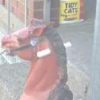Free Online Productivity Tools
i2Speak
i2Symbol
i2OCR
iTex2Img
iWeb2Print
iWeb2Shot
i2Type
iPdf2Split
iPdf2Merge
i2Bopomofo
i2Arabic
i2Style
i2Image
i2PDF
iLatex2Rtf
Sci2ools
ICCV
2007
IEEE
2007
IEEE
Learning to Find Object Boundaries Using Motion Cues
While great strides have been made in detecting and localizing specific objects in natural images, the bottom-up segmentation of unknown, generic objects remains a difficult challenge. We believe that occlusion can provide a strong cue for object segmentation and "pop-out", but detecting an object's occlusion boundaries using appearance alone is a difficult problem in itself. If the camera or the scene is moving, however, that motion provides an additional powerful indicator of occlusion. Thus, we use standard appearance cues (e.g. brightness/color gradient) in addition to motion cues that capture subtle differences in the relative surface motion (i.e. parallax) on either side of an occlusion boundary. We describe a learned local classifier and global inference approach which provide a framework for combining and reasoning about these appearance and motion cues to estimate which region boundaries of an initial over-segmentation correspond to object/occlusion boundaries ...
Computer Vision | ICCV 2007 | Motion Cues | Occlusion Boundaries | Occlusion Boundary | Relative Surface Motion | Standard Appearance Cues |
Related Content
| Added | 14 Oct 2009 |
| Updated | 30 Oct 2009 |
| Type | Conference |
| Year | 2007 |
| Where | ICCV |
| Authors | Andrew N. Stein, Derek Hoiem, Martial Hebert |
Comments (0)

